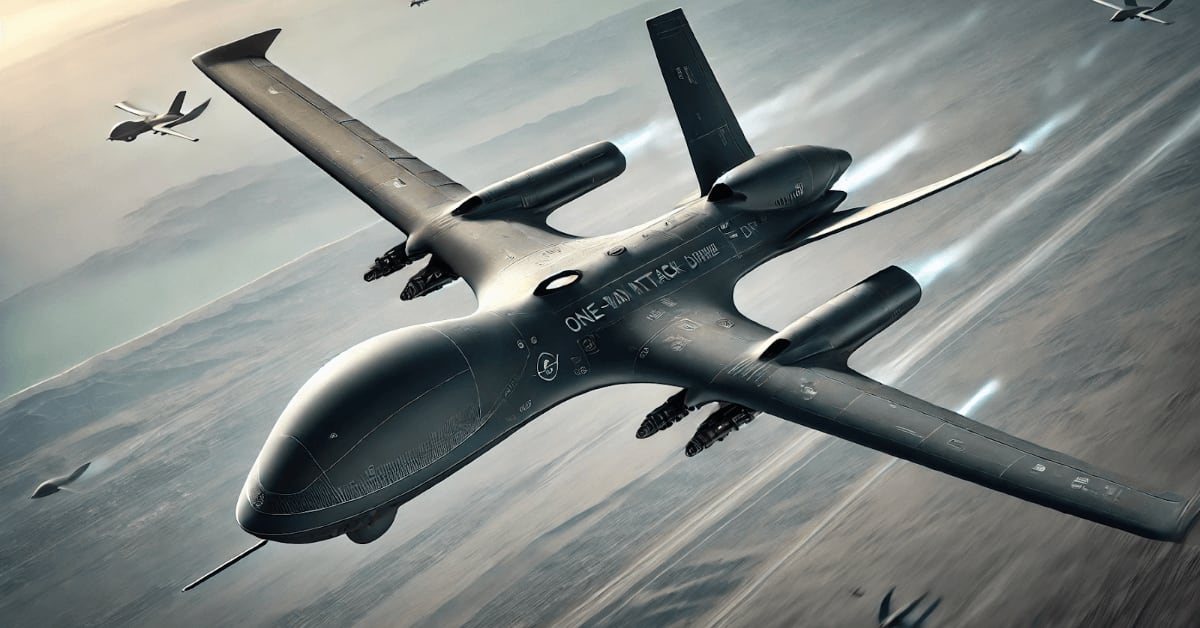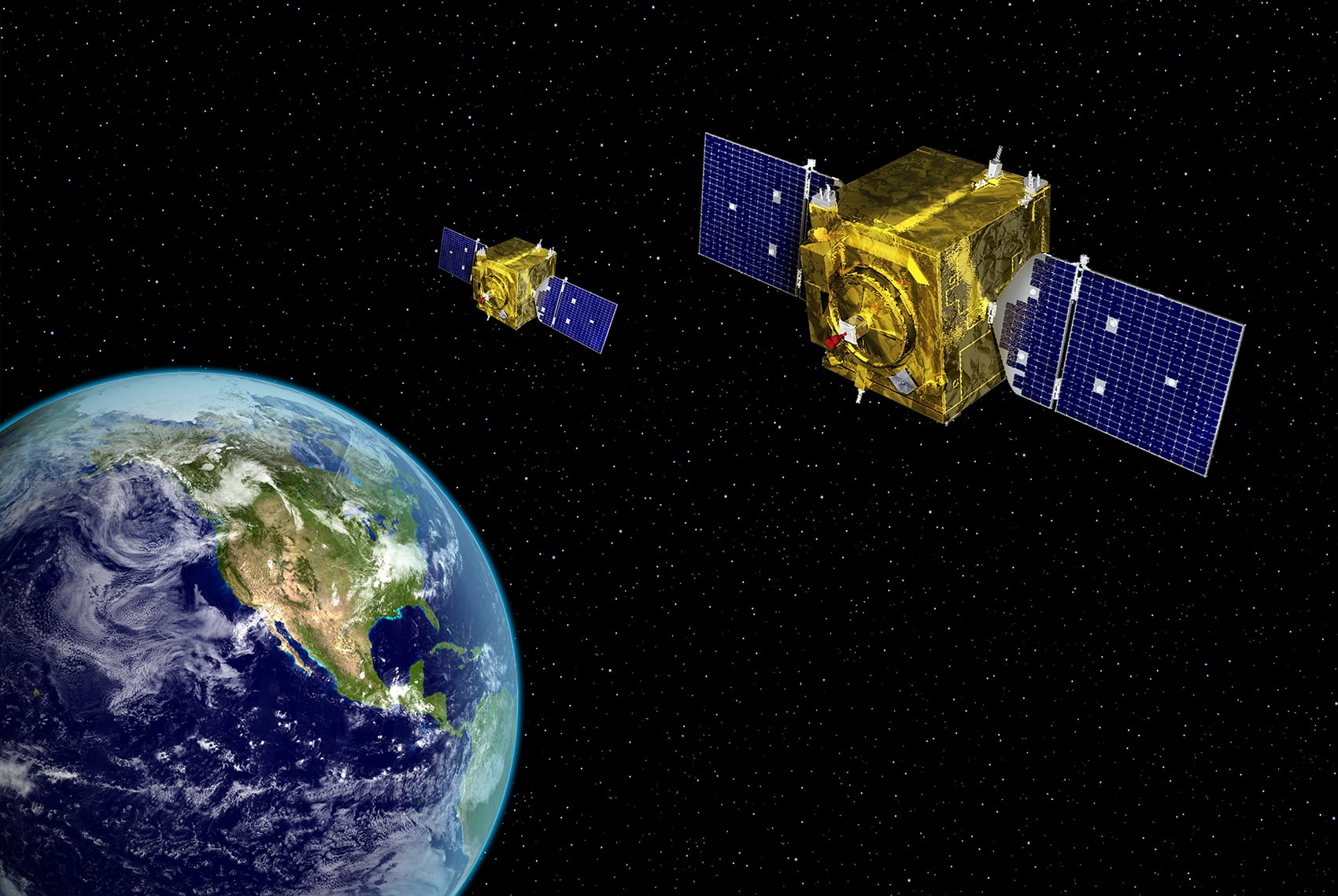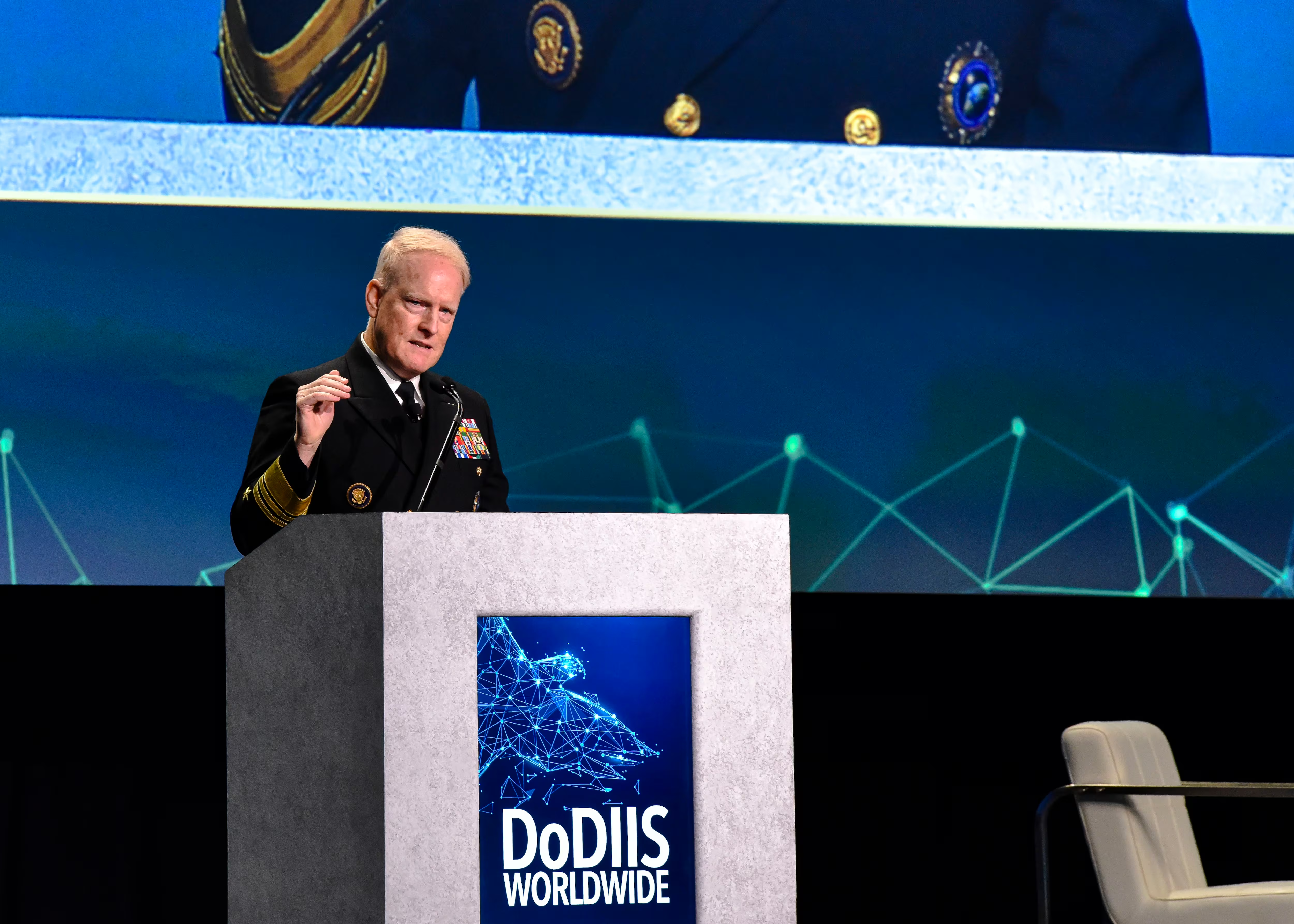Leaders at Marine Corps Systems Command hope new Navy satellites will give Marines smartphone-like capabilities to communicate.
The Mobile User Objective System, or MUOS satellites, use 3G protocols in place of legacy satellite connections. Planners say a military standard waveform on a software defined radio will deliver enhanced mobility, higher data rates and improved operational availability.
“Imagine you have technology from the 1980s and now we’re going to 3G. The voice quality is better, you get improved data rates. The warfighter will see a big difference in their ability to do command and control,” said Lt. Col. Jeffrey Decker, the ground radios team lead.
MUOS will allow the operational parameters and allowing users to come on and off the network as needed. “MUOS leverages commercial cell phone technology [WCDMA] to increase the number of users that can be supported,” said Capt. Shawn Avery, multi-channel radios project officer in command element systems at Marine Corps Systems Command.
“With legacy SATCOM technology, we had to manage the resource more stringently. The capability was not always there below a headquarters level. Now we can equip the tactical edge with persistent, long-haul voice and data connectivity,” Avery said. “When you are not talking, you are not using bandwidth, so we can get somebody else on. That’s the big sell with MUOS.”
MUOS will also offer higher data rates. The Marines won’t disclose the exact specifications, citing security reasons, but they say the exchange rate will be substantially better than in the past and with the Navy’s legacy narrowband satellites. “Users will be able to access a wide array of information networks. We’re enabling access to better data, faster,” Avery said.
The Navy’s MUOS constellation, which included five satellites, has a price tag of about $7.4 billion, according to the Government Accountability Office. Lockheed Martin is the program’s prime contractor.
The Marine Corps has been laying the groundwork for this enhancement for some time. It has already fielded thousands of MUOS-capable AN/PRC-117G radios over the past six years, and planners say the firmware within those radios will be eventually updated to support the MUOS waveform. Three new antenna kits will be fielded in support of multiple operational configurations. The Marine Corps expects to have MUOS up and running in an initial capacity by mid-2019.
Marine Corps communications experts may encounter some heavy lifting as they first put the new system into play. “There are processes and procedures for requesting services and managing services. There is a different chain of approval,” Decker said. “Someone is going to have to plan it and provision it. That architecture will have to be programmed in before the user gets it.”
This could lead to a payoff, though, in terms of significantly enhanced functionality.
The MUOS waveform is more tightly targeted, which could mean enhanced communication in areas that typically are comms-challenged.
“Legacy constellations had a singular beam to cover a large geographic area. With MUOS we have more beams covering smaller geographic areas, improving our performance in a wide array of historically challenging operational scenarios for SATCOM,” Avery said. “For instance, we would get better performance in dense vegetative environments.”
The new system also lends itself to the increasingly expeditionary nature of the Marine mission set.
Previous comms setups required bulky and complex antenna deployments. With MUOS, “we can use a smaller antenna and create a link while the person is on the move,” Avery said. “You don’t have to pause to get voice or data. MUOS consists of several interconnected ground stations which lets the user roam around the globe, much like a cell phone. This increases our operational flexibility and simplifies many of the planning actions necessary to support our expeditionary forces world-wide.”
That ability to communicate on the move is a key differentiator, as it addresses a longstanding capability gap in Marine Corps beyond line-of-sight communication capabilities. This is turn could give the Marines a new strategic edge. “This is going to change the way we work within the battlespace,” Decker said.








